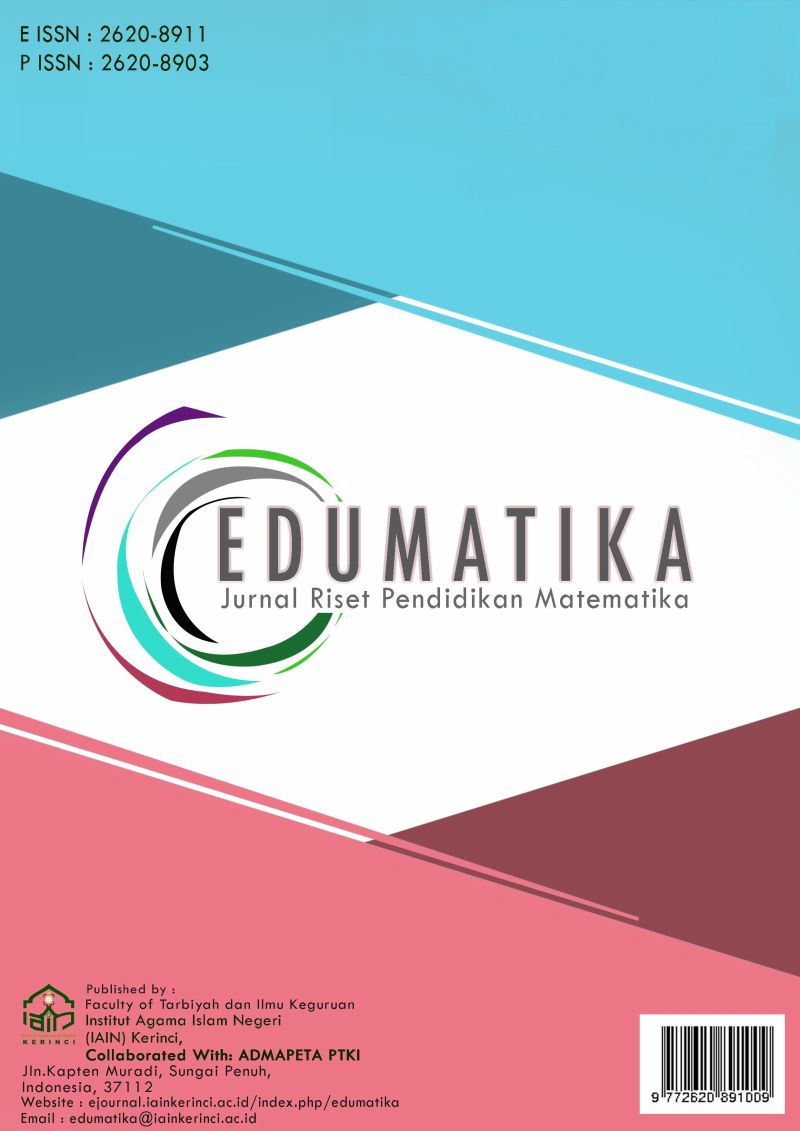Issues of Edumatika : Jurnal Riset Pendidikan Matematika
Journal
Edumatika : Jurnal Riset Pendidikan Matematika
Editor
Mhmd Habibi
Publisher
Fakultas Tarbiyah dan Ilmu Keguruan Institut Agama Islam Negeri Kerinci
ISSNP
2620-8903
ISSNE
2620-8911
Frequency
Biannual
Article Processing Charges
None
Submission Charges
None
Journal Start Date
2018
Review Process
Double Blind Peer Review
Subjects
Mathematics Education; General Education; Stem Education; Cognition
Languages
English
Editorial Board URL
https://ejournal.iainkerinci.ac.id/index.php/edumatika/FocusandScope
Author Instructions URL
https://ejournal.iainkerinci.ac.id/index.php/edumatika/FocusandScope
Author Licence URL
https://ejournal.iainkerinci.ac.id/index.php/edumatika/FocusandScope
Open Access
Yes
ARI Id
241
This page has been accessed 113 times.
Introduction
Edumatika : Jurnal Riset Pendidikan Matematika (e-ISSN 2620-8911 p-ISSN 2620-8903) is published twice a year in May and November by the State Islamic Institute of Kerinci in collaboration with ADMAPETA PTKI. Edumatika was accreditated in Sinta 3 by The Ministry of Research and Technology and The National Innovation Agency of the Republic of Indonesia from Volume 3 Issue 1 (2020) till Volume 7 Issue 2 (2024) and also indexed on DOAJ, EBSCO, Dimensions, Google Scholar, Moraref, Garuda, ROAD, etc. Edumatika published full English articles. The manuscript submitted to Edumatika should be research articles, have been carefully proofread and polished, meet the author guidelines, use the journal paper template, use Mendeley, have at least 30 references from journal articles, and have at least ten pages. It will ensure fast processing and publication. Any papers not fulfilling the requirements will be rejected.
Aims and Scope
The aim of the Edumatika : Jurnal Riset Pendidikan Matematika (EJRPM) is to provide an international or National forum for the sharing, dissemination, and discussion of research, experience, and perspectives across a wide range of education, teaching, development, instruction, educational projects and innovations, learning methodologies and new technologies in mathematics education. The Journal invites original research articles and is not simultaneously submitted to another journal or conference. The whole spectrum of research in mathematics education is welcome, which includes, but is not limited to the following topics: Realistic Mathematics Education (RME) Design Research in Mathematics Education PISA Task Learning Trajectory ICT in Mathematics Education High Order Thinking Skills Mathematical Abilities Ethnomathematics Applied Mathematics
Contact Information
Mhmd Habibi UIN Sultan Syarif Kasim, Riau, Indonesia Phone +6281366252042 edumatika@iainkerinci. Ac. Id
| Id | Volume & Issue | Year | No of Articles |
| Id | Volume & Issue | Year | No of Articles |
